Houseplants transform an indoor space. They bring purified air, gorgeous greenery, and outdoorsy biophilic feels to any room. Rare houseplants go one step further because they’re exciting and interesting, too; some hail from the Amazon, and others are rare simply because you wouldn’t expect to find them inside. This article looks at sixteen rare houseplants that will completely transform your home into a lush green indoor space.
1. Pineapple Plant (Ananas comosus)
Exotic-looking pineapple plants love warm indoor conditions, and they’ll completely transform your home into a tropical paradise. Mature indoor pineapple plants are pretty rare, and fruit producers are few and far between. They can grow 3 to 4 feet tall, so just one rare pineapple plant is a focal point.
Pineapple plants need warmth, at least 22 to 28 degrees Celsius, and they don’t need lots of water. Hold off the drink until the soil is drying out, then give it a long soak. Mist the leaves and brush off any dust to keep your plant happy and healthy.
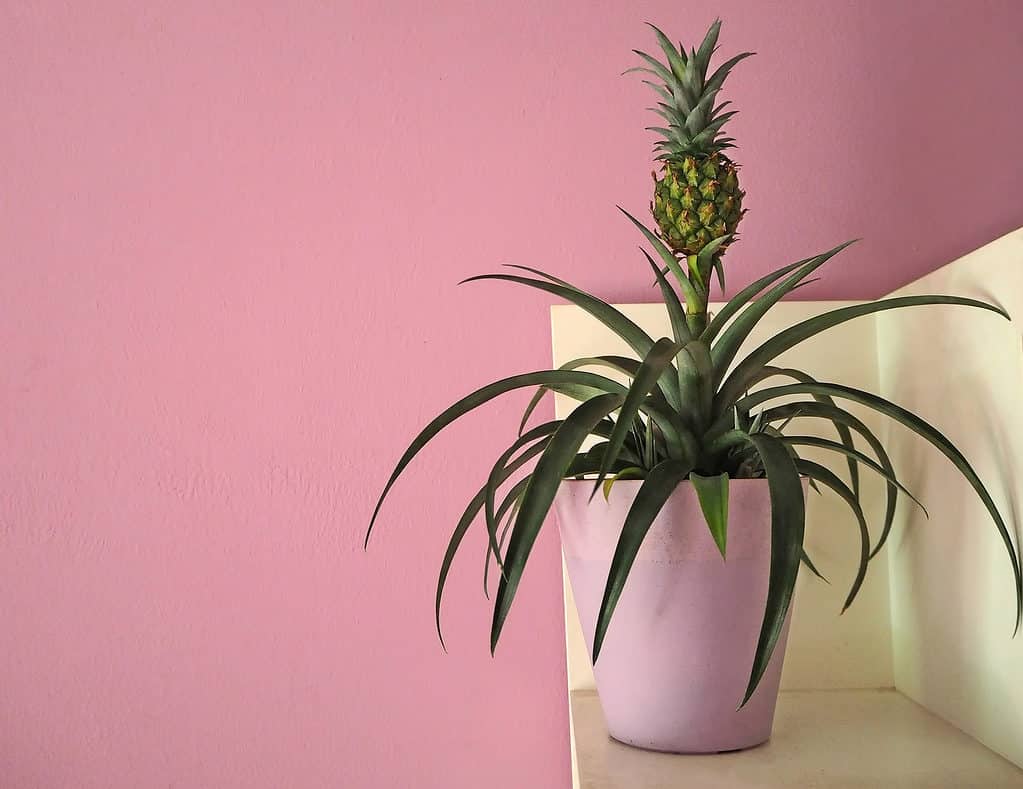
Add a pineapple plant to your home for a tropical touch.
©iStock.com/Luca Piccini Basile
2. Mimosa pudica
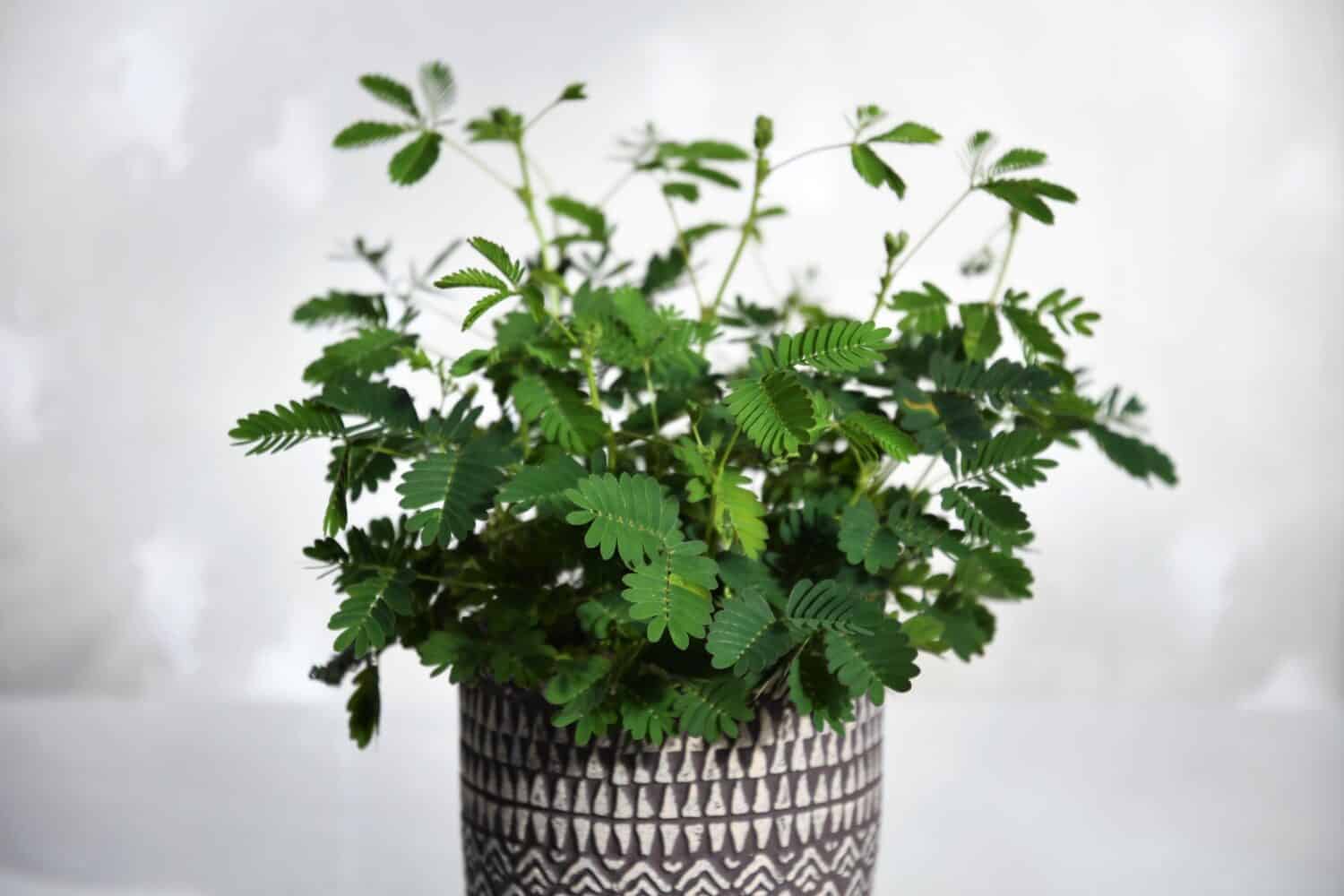
is also known as “the shame plant” or “touch-me-not” plant.
©Creative by Nature/Shutterstock.com
The “touch-me-not plant,” or the “shame plant,” is a rare houseplant that completely transforms your home with its tall pink capitulum inflorescence. It’s a wild woody shrub native to Brazil, but as a houseplant, it’s much more refined with frilly compound leaves that close up when they’re touched. Experts aren’t sure why but think it might conserve energy or help protect its leaves from damage.
In your home, it brings vivid green touchable tones and a pop of lollipop pink, not to mention its air purifying quality and happy vibes.
Water it from the base when its soil starts to dry out at the top. Allow its roots to soak for a few hours and let it drain before putting it back in the display pot. Give its day-glow leaves a warm water mist to stop them from drying out.
3. Spanish Moss (Tillandsia usneoides)
Spanish moss is a rare houseplant that will totally transform your home because it will grow anywhere. It’s an air plant that doesn’t require soil!
Spanish moss is an air plant that absorbs water and nutrients from the atmosphere, so all you need to do is mist it with water twice a week and occasionally mist it with a nutrient spray.
Hang it from the curtain rail, fireplace, in hanging basket bundles, or the showerhead, or even weave it through your stair banister.

Spanish moss is an air-purifying plant.
©Victor FlowerFly/Shutterstock.com
4. Variegated Prayer Plant (Maranta leuconeura)
South American prayer plants are pretty common, but the rare variegated versions in pink, green, and white stripes are rare.
These rare houseplants completely transform your home because their unusual foliage changes position from day to night. During the day, the leaves open, but at night they fold closed. That’s how it got the name prayer plant.
Variegated versions show off stripes; the pretty leaves sit atop long, thin stems. It’s easy to take care of too. Position it in bright indirect light, water it from the base when the top inch of soil is dry, and mist it once or twice a week. They love humidity, and it stops the leaf tips from turning brown.
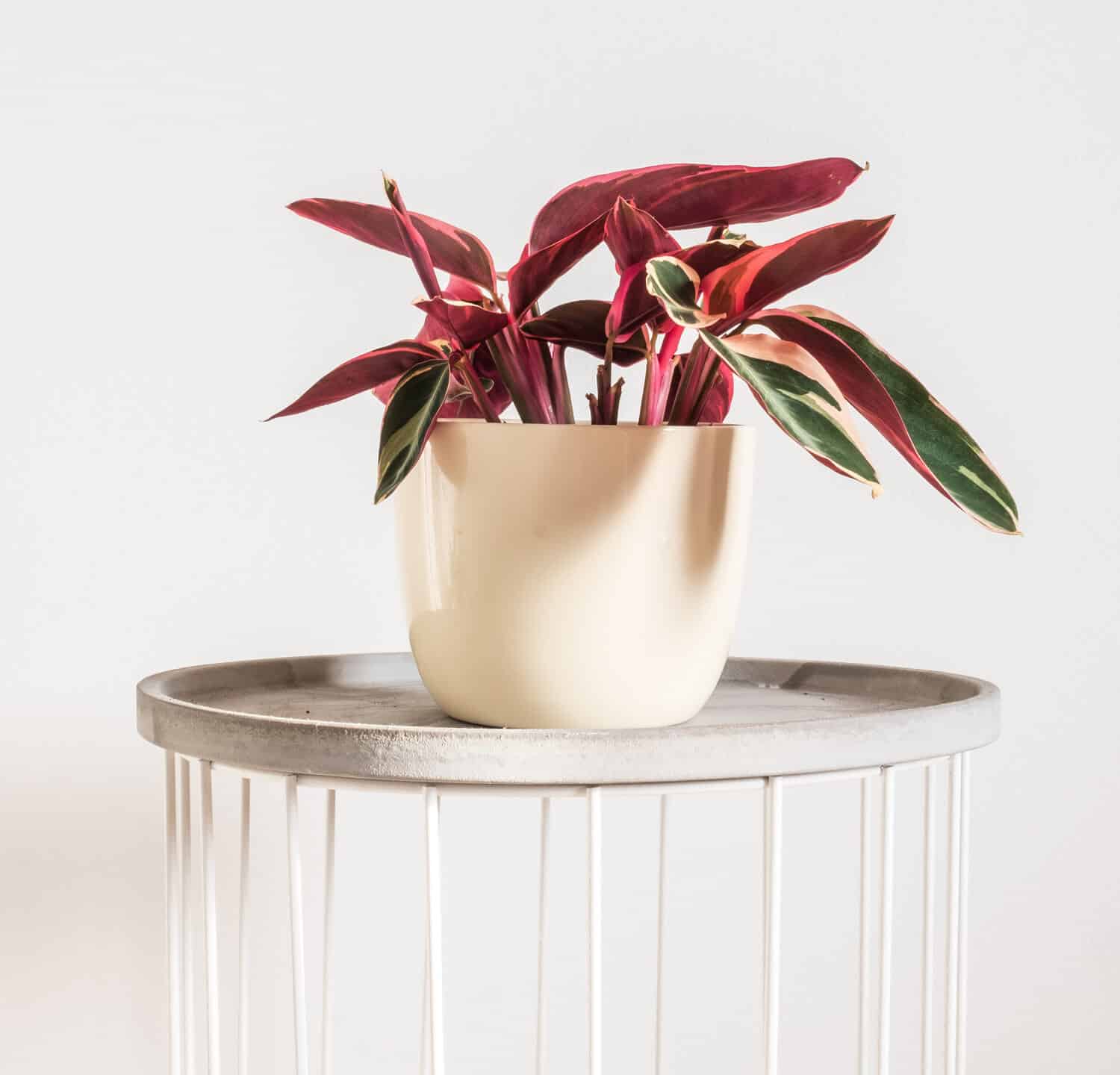
Prayer plants are common, but there are also rare variegated colors.
©Zuzana Habekova/Shutterstock.com
5. Lipstick Plant (Aeschynanthus)
Kiss, kiss! The lipstick plant is a rare houseplant with bright red tubular flowers that resemble lips. It’s a home transformer because that pop of red is unmissable; it’s a real focal point.
This pretty plant is native to Malaysia. It’s an epiphyte vine with ovate deep green leaves that set off its red flower pop.
Plant it up in a 50/50 mix of houseplant soil and perlite for plenty of air around the roots, and water it only when the soil is drying out. It needs some direct sun to flower, but not hours, so choose a partially shady spot. If flowers don’t appear, just move it somewhere sunnier and give it lots of mist. Lipstick plants are tropical; they like hot, humid, and sultry (don’t we all!)
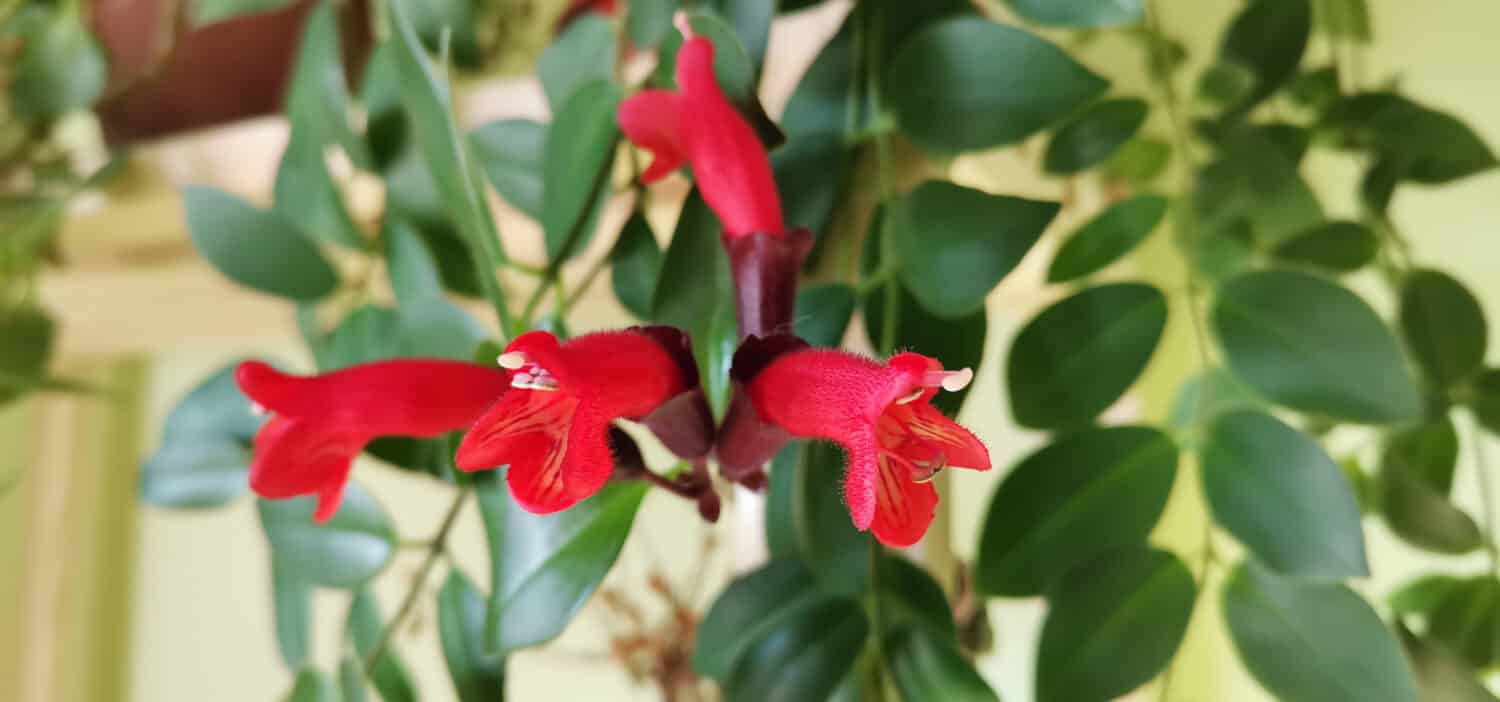
Lipstick plants appreciate a warm and humid environment.
©PeterCam/Shutterstock.com
6. Lemon Balm (Melissa officinalis)
What’s rare about lemon balm? Growing it indoors!
Lemon balm is chiefly an outdoor plant we use to flavor food, but it’s a beautifully scented houseplant in the winter months and one your friend won’t expect to see.
Lemon balm has frilly deep green aromatic leaves that fill a room with a fresh scent when rubbed. In summer, creamy-white or purple flowers bloom along the stem. It’s a pretty, fresh-scented houseplant that boosts your mind and senses.
Grow it in a sunny spot and water it from the base when it begins to dry out. If you’re not adding it to fish or chicken dishes, just trim the outer leaves to keep things neat.
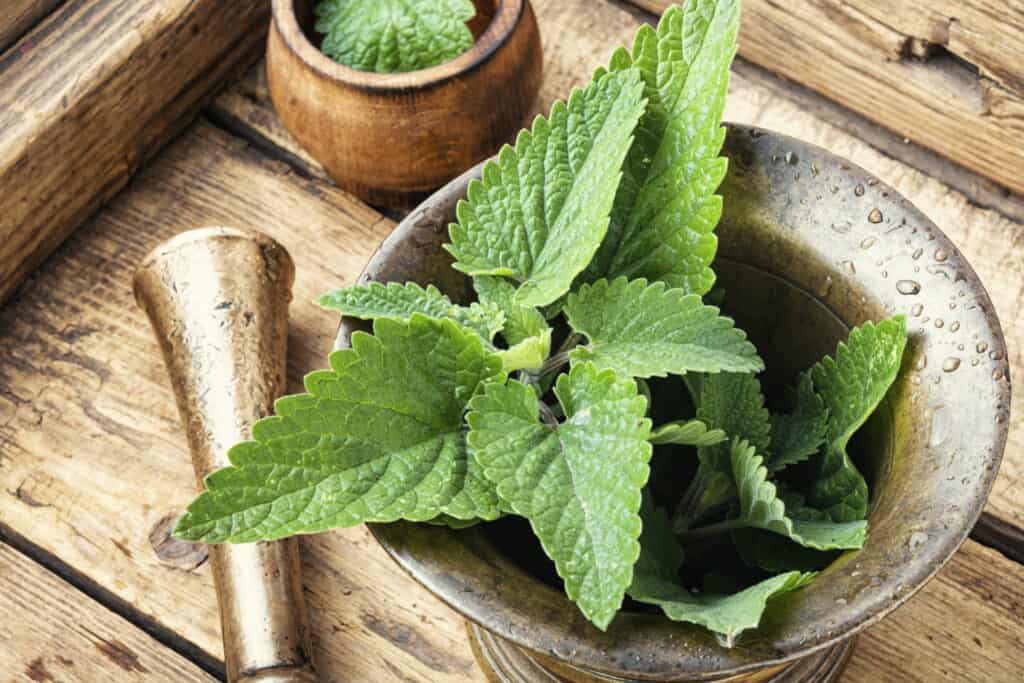
You don’t see lemon balm grown inside often, but it offers a beautiful scent for any room.
©iStock.com/Nikolay_Donetsk
7. Amaryllis
Amaryllis is a Christmas plant, surely? Yes, and that’s why it’s a rare houseplant — you don’t see them outside of the holiday season.
Amaryllis grows from a bulb and takes months to bloom. Water it in spring, and keep adding enough water to keep the soil moist, not soaked. A beautiful stem, green leaves, and an outrageously gorgeous flowerhead creates an incredible focal point and perks up a boring room. Amaryllis originates from Africa, and they really suit a safari theme if that’s your thing.
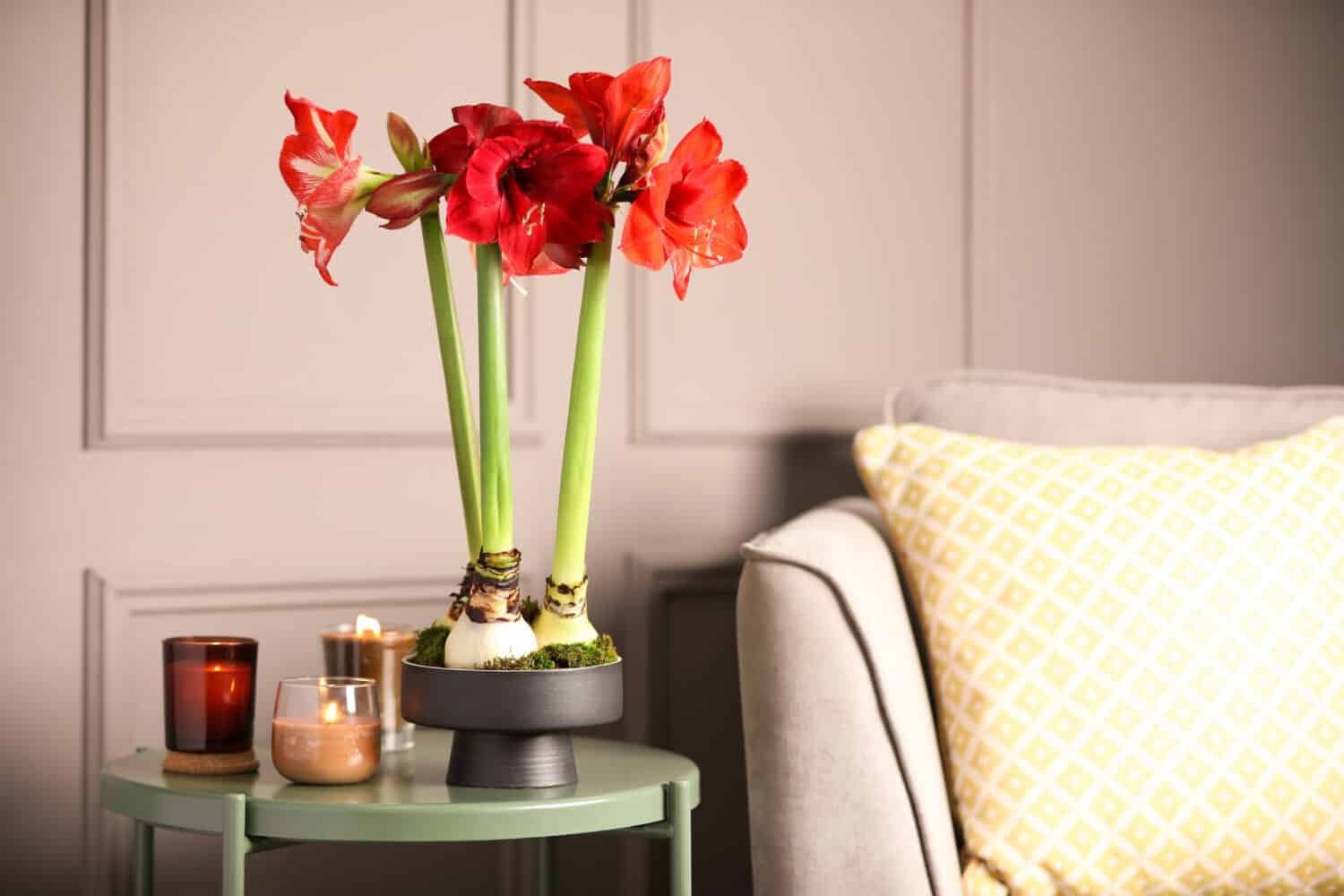
Amaryllis is a beautiful plant year-round, not just Christmas.
©New Africa/Shutterstock.com
8. Sage (Salvia officinalis)
Sage is best known as stuffing flavor, but a sage plant is beautiful and a rare houseplant you won’t find in anyone else’s lounge.
Tricolor sage is the best choice for houseplants because its pop of green, gray, and purple foliage is eye-catching. When it blooms, captivating purple flowers top its stems.
Native Americans burned sage in the home to ward off evil spirits, and its warm tasty aroma is calming. A great little plant for mental health and a rare sight in the home, but what’s more, it’s simple to care for. Give it plenty of sunlight, water when it’s dry, and fertilize it in spring. That’s it!
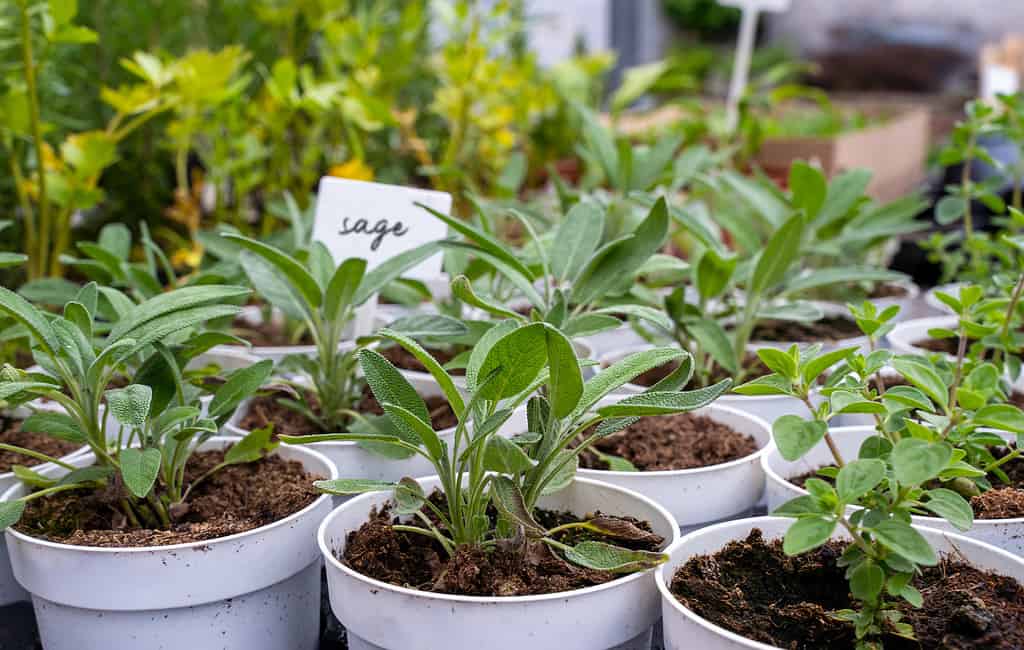
A sage can add color and beauty to your home when displayed indoors.
©iStock.com/creativeneko
9. Jade (Crassula ovata)
Succulents like aloe vera are attractive, but everyone has an aloe. For a rare sun-loving succulent, try a jade plant.
Jades are native to South Africa and have thick fleshy leaves with white or pink flowers in summer. They love the sun and heat but don’t like humidity, so only water it from the base when it’s drying out. Use a 50/50 mix of houseplant compost and perlite to ensure good drainage, and it’ll transform your home with thick and leathery ornamental leaves.
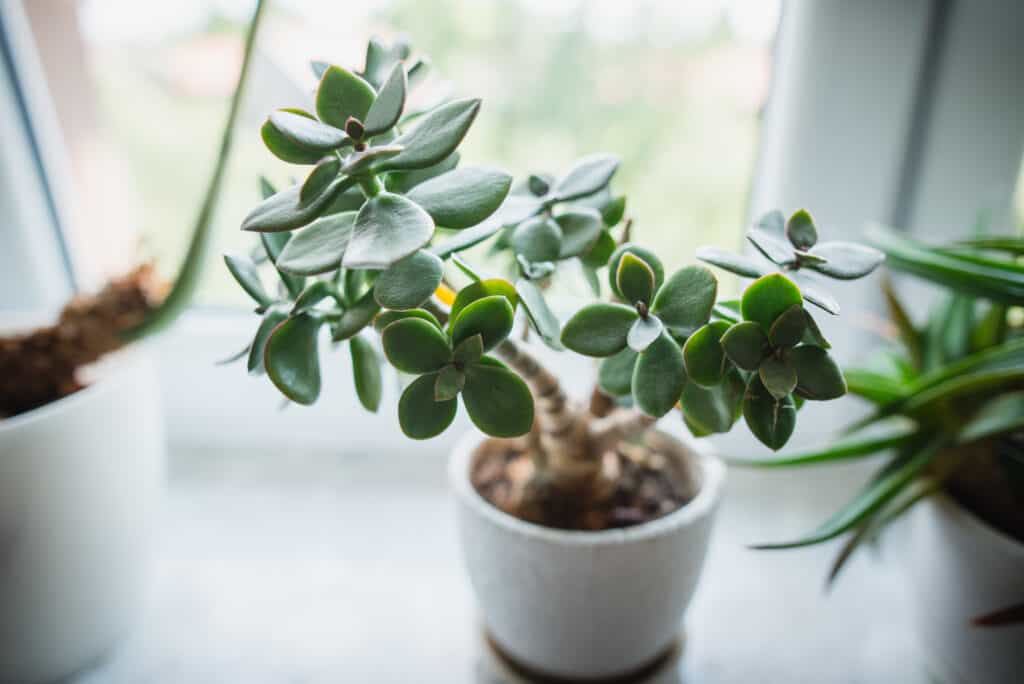
Jade plants are sun-loving succulents that make a wonderful rare houseplant.
©Jus_Ol/Shutterstock.com
10. Bird’s Nest Fern (Asplenium nidus)
Ferns are two-a-penny, but a rare fern that will transform your home is the bird’s nest fern. It has this name because it’s cup-shaped with a central rosette that could neatly fit a bird’s nest inside. Its bright green glossy fronds instantly cheer the room and perk up tired brains. Healthy bird nest ferns reach 5 feet tall, so it’s unmissable.
Bird’s nest ferns like consistently moist but not soggy soil. Direct sun will turn it crispy, so choose a cool, indirectly lit spot for this vivid beauty.
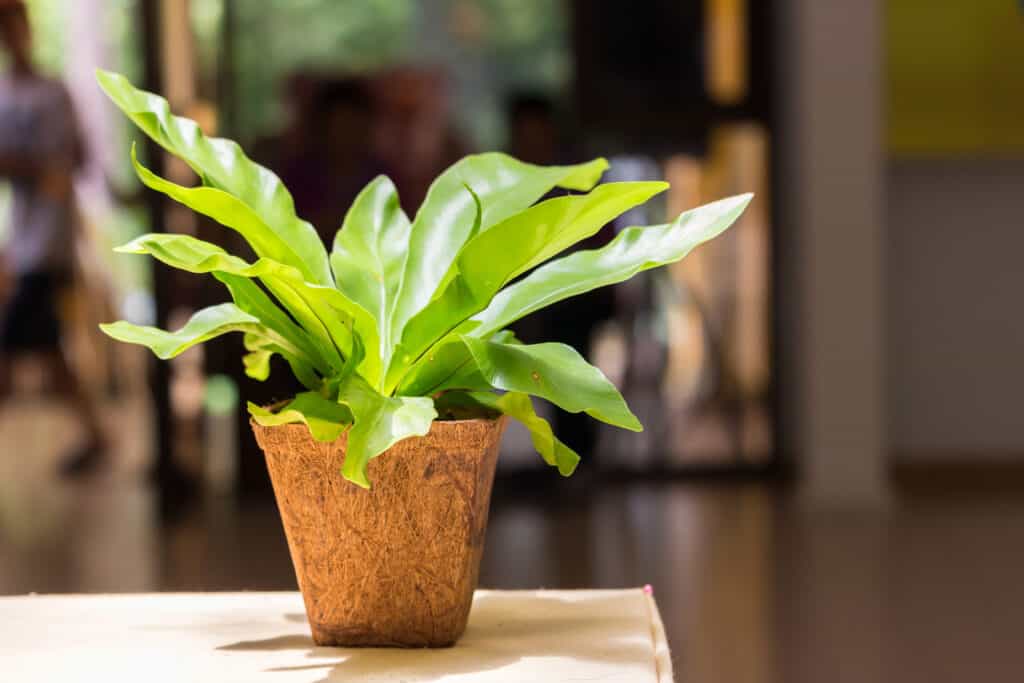
The bird’s nest fern is a great houseplant for your home and can reach up to 5 feet tall.
©Toey Toey/Shutterstock.com
11. Patchouli (Pogostemon cablin)
Patchouli plants? They were cool in the 1960s, so it’s time for a revival. Rare patchouli plants will get your visitors talking, and when their leaves are rubbed, they emit that unmistakable rich, warm scent.
It’s a shrubby mid-green plant with large oval aromatic leaves that is native to Southeast Asia. Its stems reach 2.5 feet tall, producing white and purple flowers in summer.
Patchouli plants love warmth and humidity but not direct sun. Choose a bright spot and mist it regularly for big handsome leaves. Water patchouli from the base, but only when it’s dried out at the top.
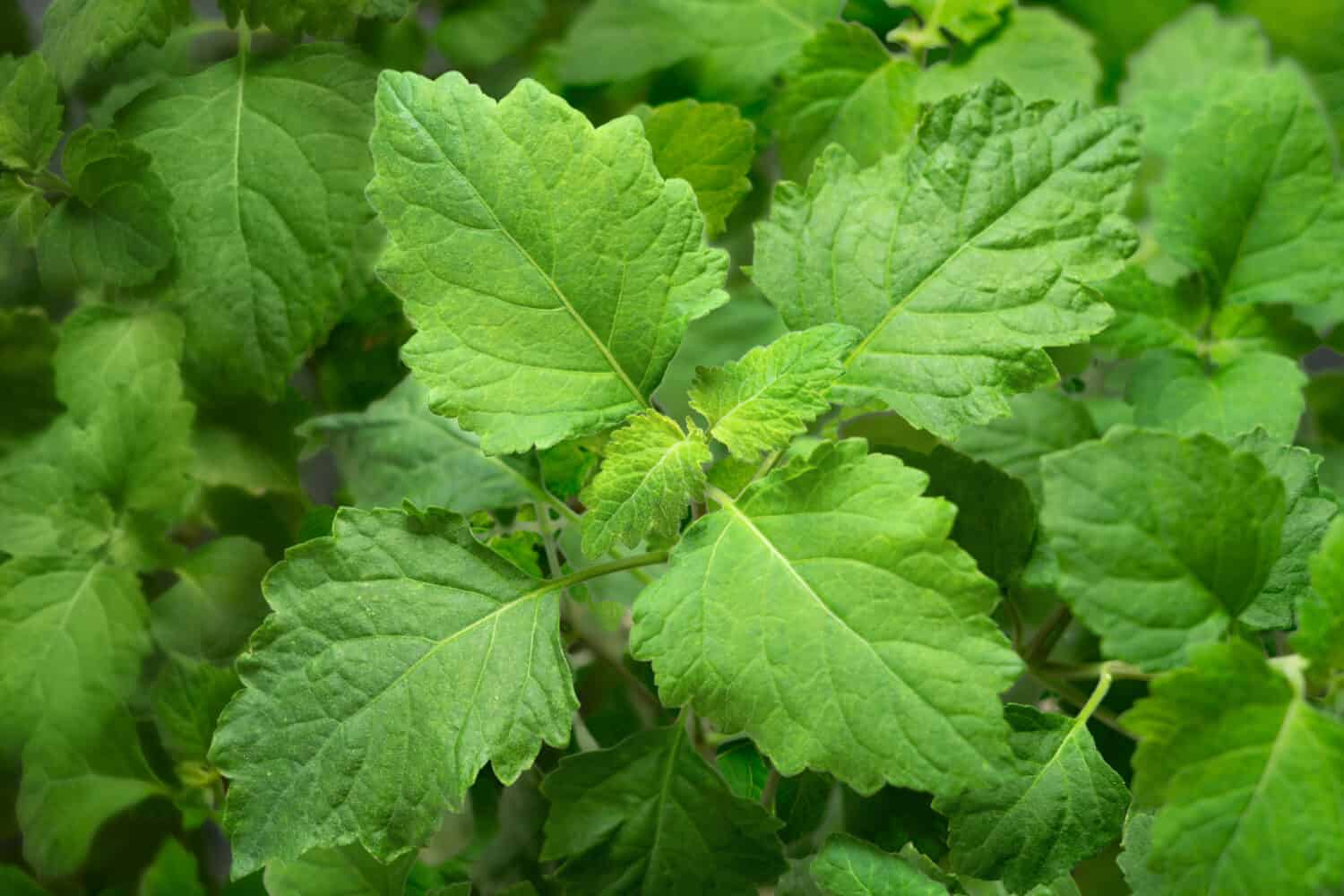
Patchouli can reach up to 2.5 feet high.
©AmyLv/Shutterstock.com
12. Pink Princess Philodendron
Philodendron is a common house plant, but check out this cultivar, Pink Princess! It’ll totally transform a room with its mix of pink and green heart-shaped leaves. This unique philodendron hails from the jungles of Central and South America, so it likes indirect light and plenty of humidity. Mist it regularly and water it from the base when it starts to dry out.
This stunning indoor plant is covered in pink dots and pink bubblegum variegated stripes.
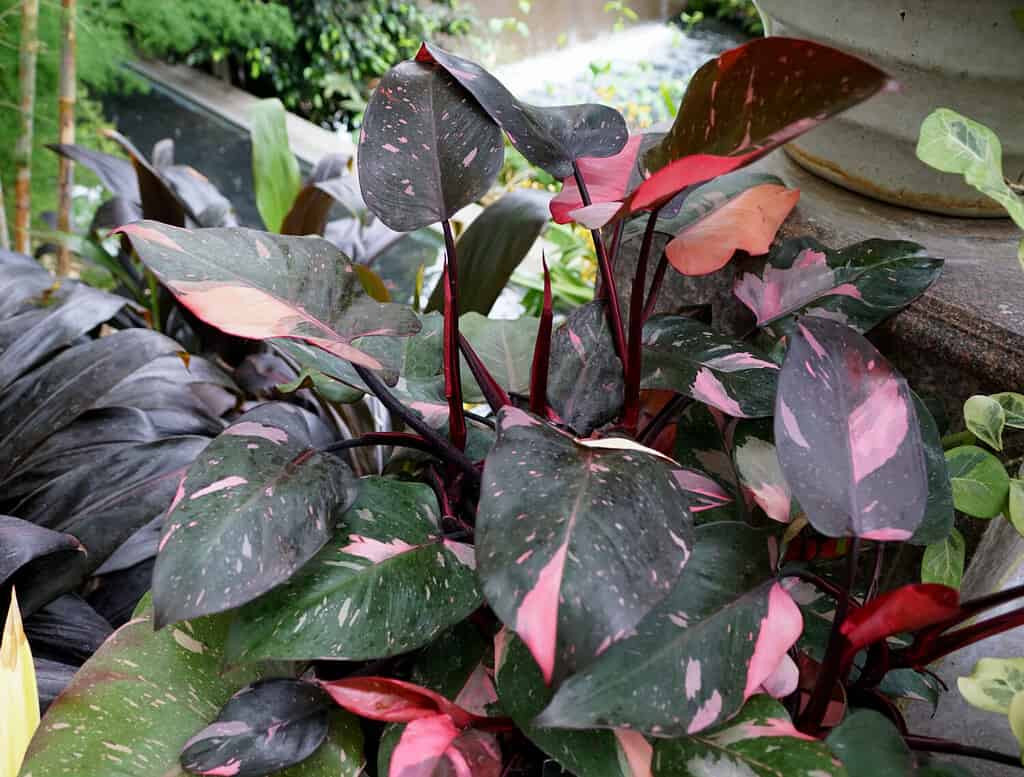
The Pink Princess Philodendron features pink dots and bubblegum stripes for a happy burst of color in the home.
©Khairil Azhar Junos/Shutterstock.com
13. Frizzle Sizzle (Albuca spiralis)
Frizzle sizzle is a rare houseplant that will transform your home with shape and scent. This unique houseplant is commonly called a corkscrew albuca. It’s part of the asparagus family and native to the Western and Northern Cape Provinces of South Africa.
It has skinny spiral leaves tipped with fine hair and pretty nodding green and yellow flowers in summer. The best bit is the flowers’ vanilla scent that fills a room on warm days.
This rare houseplant likes indirect sun, warmth, and water when the topsoil is starting to dry out. Fertilize it in spring.
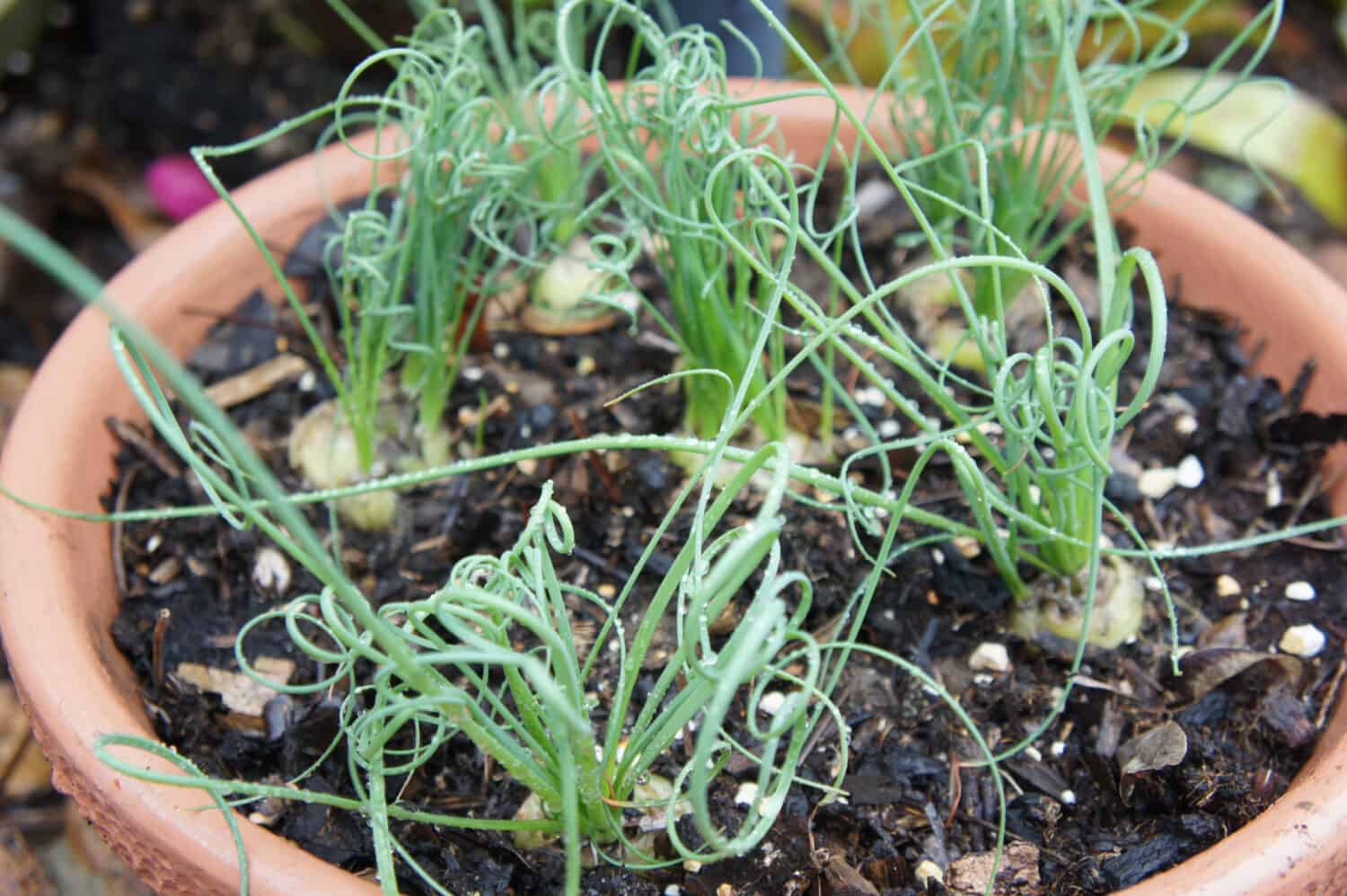
Frizzle sizzle features spirals at the end of its leaves.
©Nancy McAlary/Shutterstock.com
14. Alocasia Tiny Dancer (Alocasia brisbanensis × Alocasia odora)
Common alocasia houseplants appear in lots of homes, but the Tiny Dancer cultivar is rare. It’s a hybrid plant from tropical Asia and eastern Australian rainforests that transforms a home because its unusual looks and frequent movements require further investigation.
It has small cup-shaped foliage atop thin stems that dance in the breeze. Place this little gem near an open window, and it’ll dance each time a breeze passes.
Because Alocasia Tiny Dancer is a tropical rainforest plant, it can’t cope with direct sun. Position it in bright, indirect light and mist it several times a week to increase humidity. Water it from the base when the topsoil begins to dry out.
15. Eucalyptus (Eucalyptus globulus)
A favorite of koalas, eucalyptus is a common but rare houseplant.
In your home, eucalyptus spreads a calming scent, and its foliage is tactile. Rub your fingers through the eucalyptus, and it’ll scent the room and your hands for hours.
However, eucalyptus houseplants need plenty of room; some reach 6 feet tall indoors. Place it near a window and water it when the soil begins to dry out. It’s a simple-care, hardy houseplant that few people think of keeping inside. Be careful, however, as eucalyptus is toxic to dogs and cats.

Eucalyptus leaves can help reduce stress and improve your sinuses.
©All for you friend/Shutterstock.com
16. Gold of Kinabalu Orchid (Paphiopedilum rothschildianum)
One of the very rarest houseplants that’ll transform your home is the Gold of Kinabalu orchid, sometimes called the Rothschild’s Slipper Orchid. It’s a clear-leafed orchid species with a tall stem topped with up to six large burgundy and white striped flowers.
This amazing orchid is native to Mount Kinabalu’s rainforest in Borneo at a 500-to-1200-meter elevation. It’s difficult to source and pretty expensive, but it’s a talking piece and totally unmissable in the home.
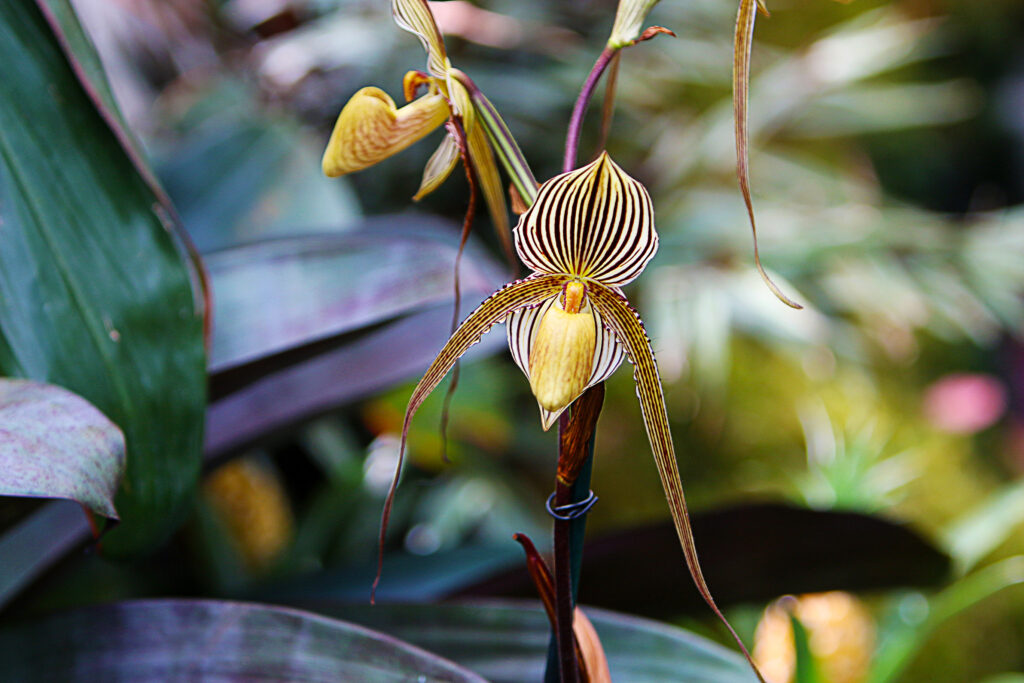
It can be hard to source a Gold of Kinabalu orchid, but it will be a showstopper in your home.
©yakonstant/Shutterstock.com
How to Find Rare Houseplants
Finding rare houseplants is tricky; if it was easy, they’d be common!
One of the best ways to find rare houseplants is to sign up to a reputable houseplant seller’s website or a specialist nursery’s emails so you’re the first to know when the rare ones arrive.
Other ways to source rare houseplants include taking cuttings from a friend’s healthy plant or joining a local rare houseplant enthusiasts group to exchange knowledge, cuttings, and seedlings.
Benefits of Rare Houseplants
Rare houseplants bring joy to a home. They look beautiful, and it’s a kick collecting rare plants that your friends don’t have, but that’s not their only benefit.
Houseplants purify the air: Leafy houseplants absorb chemical nasties and release healthy oxygen into your home. NASA research in the 1980s indicated plants cleaned up indoor spaces.
Biophilic properties: Houseplants reduce stress and boost low mood. The process is called biophilia, and it happens because humans are mammals. We used to inhabit leafy green spaces, so we seek out connections to nature, even if we don’t consciously realize it. In a green space, we feel safe, and this improves our mental health.
How to Care for Rare Houseplants
The best way to care for rare houseplants is to take the time to study their needs.
In general, leafy tropical rainforest plants can’t cope with direct sunlight. They evolved large soft leaves to absorb as much filtered sunlight as possible on the rainforest floor. Direct light magnified by a window simply scorches them to death.
Cacti and succulents, however, love sunlight; the more they get, the better they grow!
Houseplants experts say the number one killer of houseplants is overwatering. You may kill plants with kindness by giving them a dribble of water each day. All this does is rot the roots, but plants need oxygen on their roots as well as water.
Instead of a regular dribble, remove houseplants from their display pots, soak them in a sink or bucket for several hours, drain clear, and replace them.
Soak houseplants when the top soil is dry down to an inch or so, except ferns, they need consistent moisture. Houseplants need much less water in the winter months.
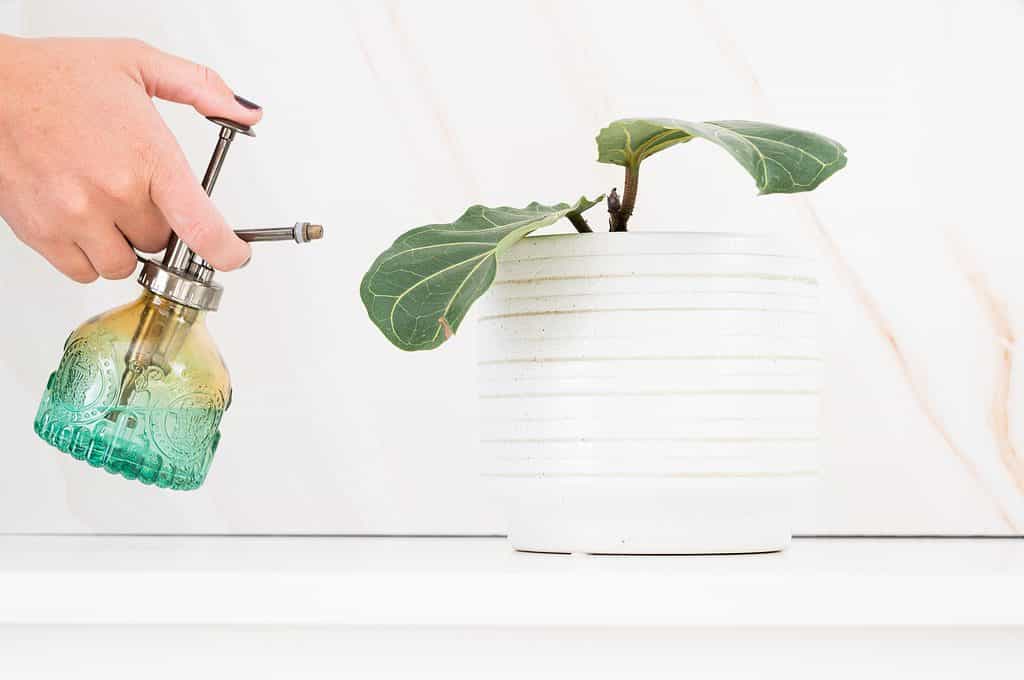
Be careful not to overwater your plants, as this is the number one killer of houseplants.
©Cavan-Images/Shutterstock.com
Transform Your Home: Creative Ways to Display Rare Houseplants
You can display your houseplants throughout your home with the following methods:
- Rule of three: Humans prefer groupings of three or five. Experts aren’t sure why, but objects, including plants, always look better in a group of three.
- Hanging plants from a ladder across the ceiling: Fix a ladder to the ceiling and hang plants from the rungs.
- A ladder against a wall: create extra display shelves with a wall-propped ladder.
- Reflections: Double your greenery by placing a mirror behind each pot.
- Frame them: Place picture frames around a shelved wall plant to create a living work of art.
- Use each room: Plants are not just for the living room. Put rare houseplants in every room to boost mood, purify the air and create beautiful living ornamentation. Home workers benefit from leafy desk plants, and who can beat the company of a peace lily in the shower room?
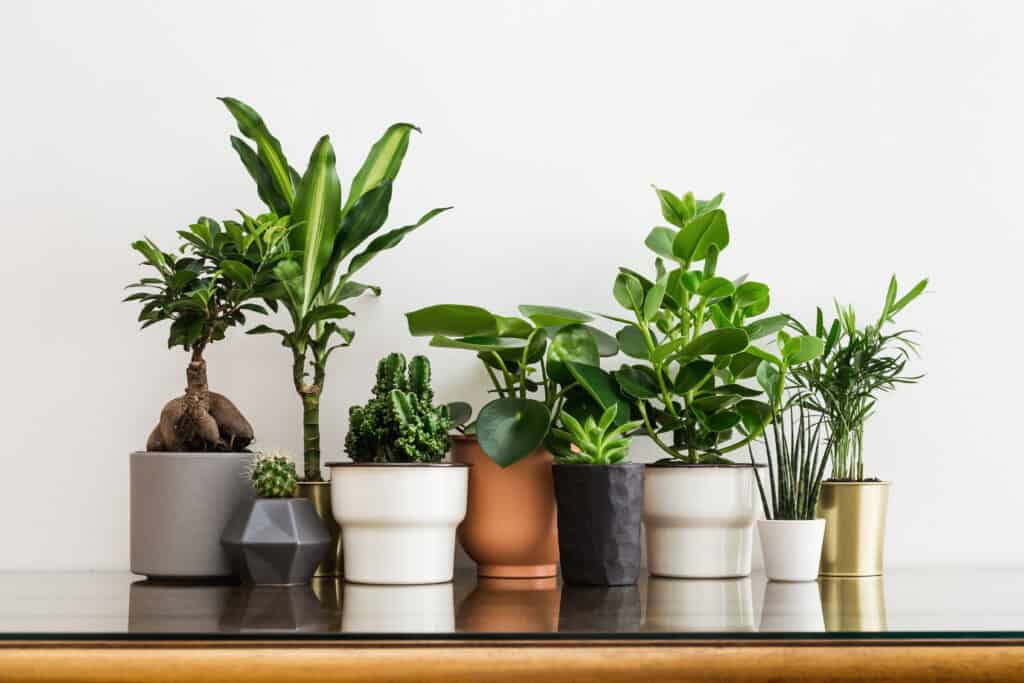
Cluster your plants together in groups of three or five for an eye-catching look with their varied planter designs.
©Mallmo/Shutterstock.com
Summary of 16 Rare Houseplants That Will Completely Transform Your Home
| # | Houseplant |
|---|---|
| 1 | Pineapple Plant |
| 2 | Mimosa pudica |
| 3 | Spanish Moss |
| 4 | Variegated Prayer Plant |
| 5 | Lipstick Plant |
| 6 | Lemon Balm |
| 7 | Amaryllis |
| 8 | Sage |
| 9 | Jade |
| 10 | Bird’s Nest Fern |
| 11 | Patchouli |
| 12 | Pink Princess Philodendron |
| 13 | Frizzle Sizzle |
| 14 | Alocasia Tiny Dancer |
| 15 | Eucalyptus |
| 16 | Gold of Kinabalu Orchid |
Thank you for reading! Have some feedback for us? Contact the AZ Animals editorial team.







